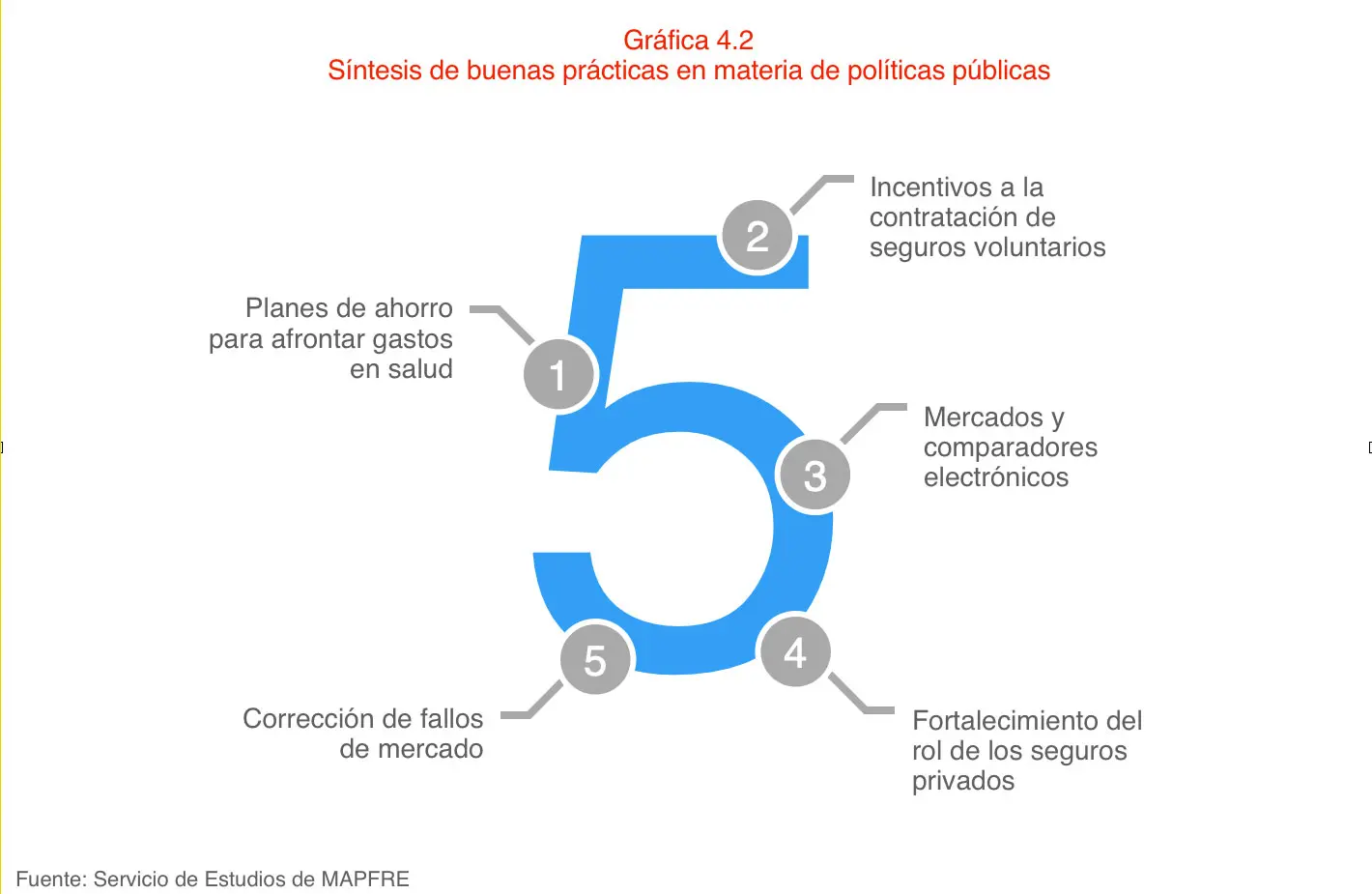INSURANCE | 06.03.2020
Universal healthcare coverage means establishing supplementary healthcare models
The main objective of most governments is to provide the population with universal healthcare coverage. Is this always possible in today’s society? What role does private health insurance play? MAPFRE Economic Research and Fundación MAPFRE have produced a report analyzing healthcare systems in several countries.
Health is a fundamental right, and protecting it is generally the responsibility of public authorities. In recent decades, one of the main concerns of governments and international bodies has been to guarantee universal healthcare coverage for the entire population, meaning that everyone can receive quality healthcare services without having to pay large sums of money. Although significant advances have been made in this regard, it is estimated that half of the world’s population is still unable to access the health services they need.
MAPFRE Economic Research produced a report in 2018, published by Fundación MAPFRE, which analyzes the healthcare systems of several countries whose models can be taken as a benchmark for the design of new public policies. It also addresses the role that private insurance can play in the healthcare of citizens.
Healthcare models
The role of private insurance depends on the healthcare model in each country. The traditional models adopted to date (such as the Bismarck, liberal and Beveridge models) are becoming less clear as they seek to cope with factors such as aging populations and the consequent increase in public spending.
The report notes that there is a tendency to extend universal healthcare coverage to all residents of a country using variants or even combinations of the original models.

The countries analyzed and their practices
The report analyzes 11 countries, taking into account a number of indicators and the distinct characteristics of each system. A system was developed to classify the situation of each healthcare system:
1. Japan
2. Singapore
3. Spain
4. Australia
5. France
6. Netherlands
7. United Kingdom
8. Chile
9. United States
10. Brazil
11. Mexico
The report highlights five public policies adopted in these countries as examples of good practices that support the goal of progressing toward universal healthcare coverage.
1. Savings plans to cover healthcare costs. Thinking about medium- and long-term savings to tackle future health problems is seen as key to improving healthcare.
The healthcare system in Singapore includes a citizens’ saving scheme to provide for their future healthcare requirements. Citizens have a fund that is built up while they are healthy in order to cover their future healthcare costs. This system combines a state subsidy of up to 80 percent of hospital costs for serious illnesses with a mandatory savings system.
2. Incentives for taking out voluntary insurance. With the aim of expanding healthcare to make it universal, some countries choose to offer supplementary systems and provide incentives for taking out private health insurance that supplements public healthcare, which alleviates the burden on public systems.
This best practice is followed in Australia, where the incentive takes the form of an income tax rebate.
In Spain, some companies offer their employees supplementary health insurance in addition to the mandatory coverage, as an employment incentive, which is tax-deductible.
In the United States, Brazil and Mexico, tax credits also granted for taking out this type of employment incentive, or for taking out individual private health insurance.
3. Markets and online comparison engines. Countries with very high levels of private insurance have regulated online comparison engines so that users can compare insurance prices and coverage.
In the United States, in addition to tax credits, an electronic market has been created to facilitate policy contracting and access to more options. There are digital platforms for taking out individual insurance policies, managed at state or federal level. By law, these insurance policies must cover a fairly broad range of benefits as a minimum.
4. A bigger role for private insurance. In some of the systems analyzed as part of the study, the strategy for providing universal coverage includes strengthening the role of private health insurance.
The Dutch health system, for example, provides universal coverage through mandatory medical insurance managed by private insurance companies. Companies that choose to participate in this system are required to guarantee a basic package for all insured parties.
The United States established an obligation to take out private health insurance for all those not covered by programs for vulnerable populations.
5. Covering market gaps. In countries with healthcare systems characteristic of the free-market system, there are public protection programs for certain vulnerable sectors of the population that would otherwise not be able to access healthcare coverage. In the United States, this type of program covers approximately 40 percent of the population.

Future challenges
Healthcare systems around the world are facing enormous challenges, regardless of the model in each country. The widespread increase in debt and fiscal deficits, exacerbated by increased spending on pensions and health due to aging populations, makes it difficult to allocate more public money to providing universal free and shared-cost healthcare.
Taking into account the healthcare systems analyzed, the study highlights two conclusions:
- That the goal of progressing toward universal coverage has led to the establishment of supplementary mechanisms.
- That these supplementary schemes involve greater participation by the private sector, whether through stimuli for companies to provide supplementary healthcare coverage for their employees or through greater participation by private insurance companies in the provision of healthcare services.
The study concludes that free coverage for the entire resident population is not the only option for achieving universal healthcare. The free nature of these services should apply only to society’s most vulnerable in an attempt to remedy the deficiencies of any health model. For the rest of the population, universal coverage sometimes translates as shared cost.
Public policies should be supported by the savings and voluntary private supplementary coverage of individuals and businesses. This will enable healthcare systems to partially alleviate public spending, and devote greater resources to long-term and palliative care.
Read the full report.

